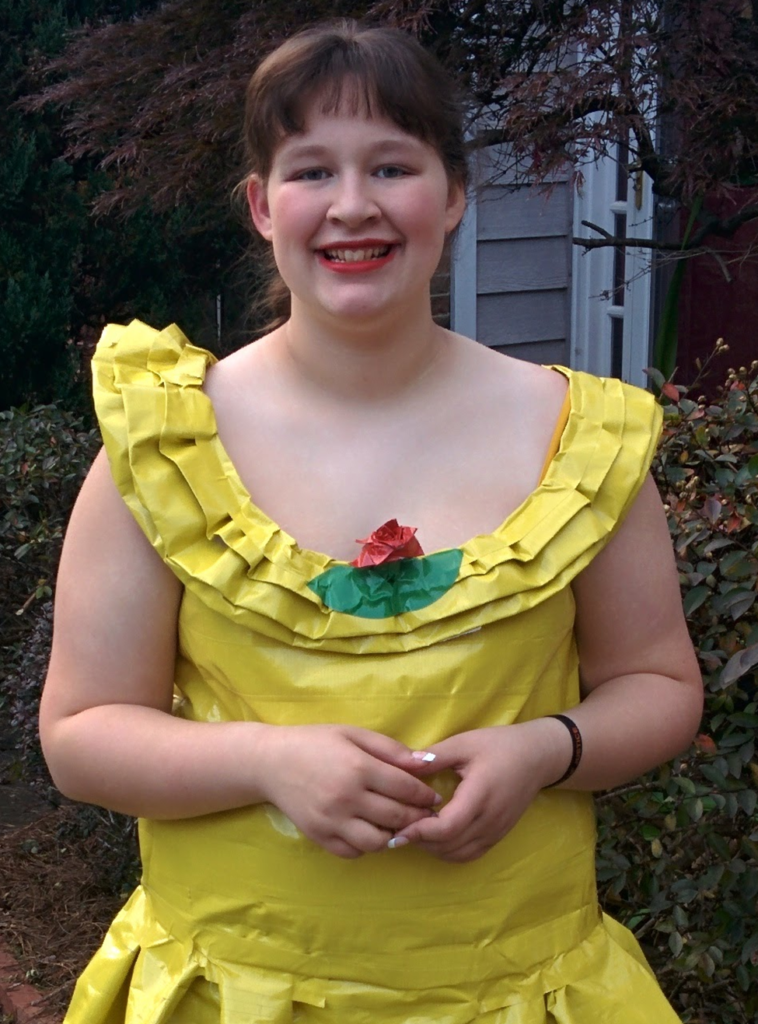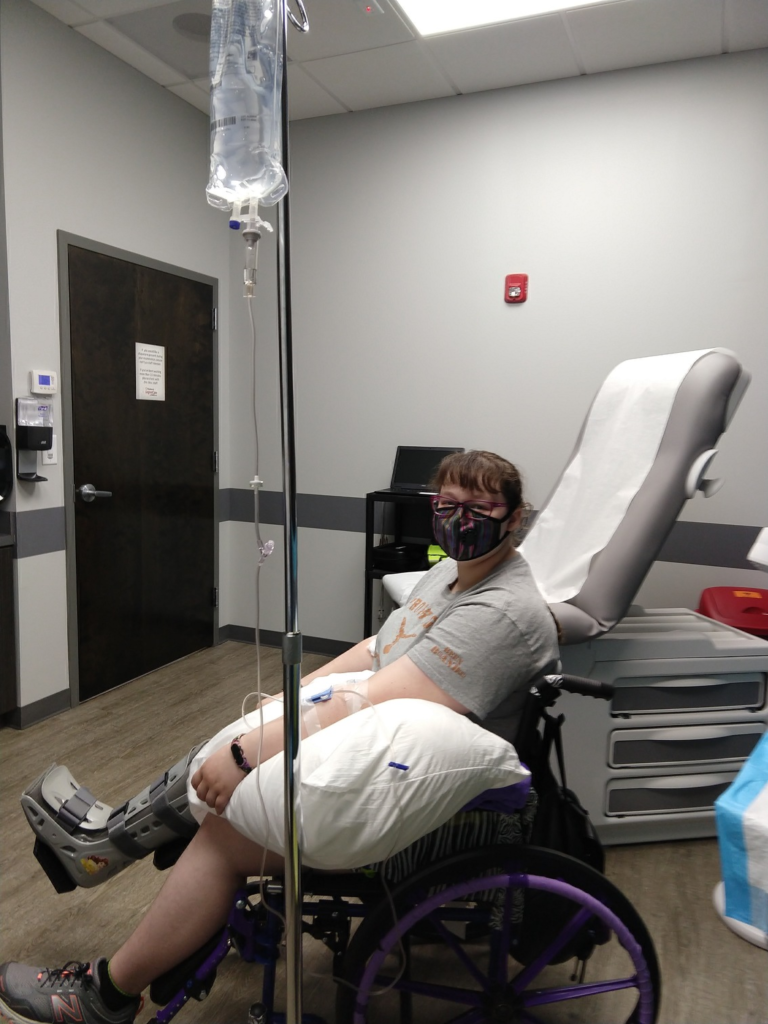October is Dysautonomia Awareness Month.
Dysautonomia (dis – auto – no – mee – uh): disorder of autonomic nervous system
Awareness: knowledge or perception of a situation or fact.
You may remember from your high school biology class that the the autonomic nervous system is a control system that acts largely unconsciously and regulates bodily functions such as heart rate, digestion, respiration and other “automatic” functions. Think of it as the infrastructure (heat, light, plumbing, etc.) control system for the of the human body.
No one pays attention to infrastructure until it breaks down.
You don’t think about the plumbing in your house until the toilet backs up.
You don’t care about the HVAC in your office building until it’s too cold or too hot for your comfort.
You don’t ponder the miracle of electricity until the power goes out and you’re sitting in the darkness watching your phone battery die slowly.
Dysautonomia is having a temperamental 3-year-old in control of your infrastructure- randomly flipping breakers, turning valves and adjusting the thermostats of your body.
As a father, I view myself as having three basic roles in life:
1. Provide for my children
2. Protect my children
3. Prepare my children for the world
This is my oldest daughter, Abby, at age 13.

She’s bright, excitable, funny and loving. She’s also very sick.
Awareness: knowledge or perception of a situation or fact.
From infancy Abby had “sensitive skin.” We learned quickly what detergents and household chemicals would cause her to break out in a painful, itchy rash, and eliminated them from our home. Over time that list grew. But, that’s just “sensitive skin,” right?
As a child Abby was “accident prone.” She stumbled more often than most kids and suffered slightly more than her fair share of sprains and bruises. But, that’s just “accident prone,” right?
Dysautonomia: disorder of autonomic nervous system
Abby’s particular flavor of Dysautonomia is two-fold: POTS and Ehlers-Danlos Syndrome, Type 3.
POTS (Postural Orthostatic Tachychardia Syndrome) is a failure of the body’s circulatory system to regulate blood flow.
Often changes in body position (standing, bending, kneeling, going up or down stairs) cause the body to be unable to properly adjust the blood flow to the heart and brain. This can cause tachycardia (a heart rate above 100 beats per minute), syncope (dizziness and/or fainting), nausea, disorientation, or all of the above. It also tells the body’s adrenal system to kick out a high dose of adrenaline (the body’s natural supercharger- it accelerates virtually every function in the body and is the core of the human “Fight or Flight” response) to help adjust for the perceived loss of blood.
Ehlers-Danlos Syndrome, Type 3 is a disorder affecting the connective tissue of the skin and joints. In short, the gene responsible for producing collagen (a general purpose cellular “glue”) malfunctions and starts producing weak, or ineffective collagen. This ineffective collagen results in weak tendons, ligaments and other connective tissues.
Awareness: knowledge or perception of a situation or fact.
In middle school Abby would often complain of sore wrists or ankles. She’d dig out old wrist braces or ACE bandages and wrap herself up at seemingly random times. I would examine the “wound,” see no swelling or bruising and tell her to “suck it up.” (Father’s role #3) Sometimes there would be swelling or bruising (she was “accident prone,” after all), so I would treat the injury as best I could for a few days. After that, however, it became clear to me that she was “milking it” for attention and I would tell her to “toughen up,” because the world wasn’t going to coddle her.
Dysautonomia: disorder of autonomic nervous system
As she entered high school, Abby began suffering from severe migraines. I was sympathetic to this, since I too have suffered with migraines my whole life. I offered her guidance from my years of experience as to how to “tough it out” when she was in pain, because “the world doesn’t stop just because you’re hurting.”
I encouraged her.
I coached her.
I mentored her.
Until I didn’t.
Awareness: knowledge or perception of a situation or fact.
Sometimes as a parent you have to make hard decisions and show “tough love” to your child. Abby was missing days of school, falling behind in her classwork, and basically “dropping out of life.”
Eventually my encouraging turned to deriding in the name of “tough love.”
“I know it hurts, baby, but you have to find a way to function through the pain. I went through this at your age and I learned how to ‘gut it out,’ and you can too! Get up, and get on with your life!”
I love my daughter, and I didn’t want her to miss out on the best parts of life because of “headaches.”
Dysautonomia: disorder of autonomic nervous system
Prolonged, repeated exposure to adrenaline destroys nerve tissues, weakens muscles and causes systemic organ degradation and eventually failure.
Abby didn’t have migraines- she had brain damage.
Abby wasn’t lazy- her body was failing.
Abby wasn’t “milking it-” her joints and ligaments were too weak to hold her body together.
Awareness: knowledge or perception of a situation or fact.
In my zeal to carry out Role 3 of being a father, I failed to consider Roles 1 and 2.
I didn’t provide her the tools she needed to work through her illness.
I didn’t protect her.
I wasn’t aware.
Dysautonomia: disorder of autonomic nervous system
This is Abby a week or so ago, at age 17.

She’s at a local clinic having an IV infusion due to pronounced dehydration. The persistent nausea due to POTS makes her unable to “hold down” food and water.
She vomited herself into dehydration, and the only solution was to bypass the stomach entirely.
This was not her first such visit.
She’s wearing a filter mask because she’s become intolerant of many common chemicals- perfumes, air fresheners, antiseptic sprays. Exposure triggers an adrenal response- she gets dizzy, her heart rate rises, adrenaline damages brain and nerve tissue.
She’s wearing a walking cast because she suffered a severe sprain of her right foot when she briefly blacked out and tumbled down the stairs in our home. Her connective tissue is so weak that even every-day activities can tear ligaments and break tendons.
She’s in a wheelchair because her knees and hips can no longer sustain her own body weight for prolonged periods- they dislocate after only minimal use. Her joints can’t hold themselves together.
Awareness: knowledge or perception of a situation or fact.
Abby was diagnosed with POTS in April of 2019 and with Ehlers-Danlos Syndrome in September.
She undergoes regular physical therapy to help strengthen the muscles around her joints- thus taking some of the load off of her tendons/ligaments.
She sees a Cardiologist, a Neurologist, an Orthopedist, a Gastroenterologist, and will start seeing a Geneticist this spring.
Her prognosis is positive- her doctors believe she’ll be able to live a relatively normal life, but she will be managing symptoms of her genetic disorders from now on.
Dysautonomia is often referred to as a “hidden illness” because sufferers don’t always “look sick.”
I spent years blind to the pain, suffering, and anguish that my precious child bore.
I lived with her every day, and couldn’t see her struggle.
I didn’t provide.
I didn’t protect.
I wasn’t aware.
I’ve got a lot to make up for.
Dysautonomia: disorder of autonomic nervous system
Awareness: knowledge or perception of a situation or fact.
You can stop blaming yourself. You didn't know and you were doing the best that you knew how to do at the time. She still loves you.